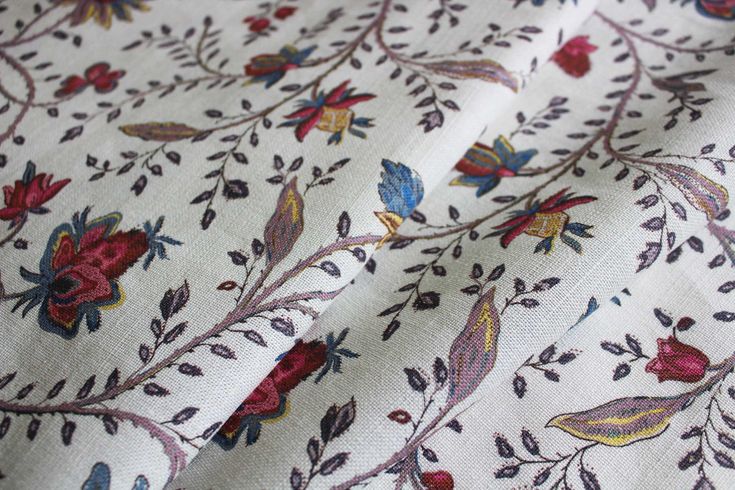Design Stories: Indiennes - The Forbidden Fabrics

As a wallpaper and fabric designer influenced by historical patterns, I have long had a passion for the "Indiennes" style, which was highly fashionable in Europe in especially the 17th and 18th centuries.
What is Indienne fabric?
Indienne prints were inspired by the vibrant and intricate designs found on Indian chintz fabrics, originally printed on calico, which were initially imported into Europe in the 16th century. The seemingly exotic designs soon became popular as people looked for something to replace the silks and heavy woollen fabrics of the day. European manufacturers eventually began recreating these designs on their own cotton fabrics in a style more in line with European tastes. European fashion houses went wild, incorporating these new exotic textiles into everything from gowns to home furnishings including bedspreads, curtains, and upholstery.

Jacket and petticoat, Coromandel Coast for export to Europe, about 1750, painted and dyed cotton chintz.
Museum no. IS.12 & 14-1950. © Victoria and Albert Museum, London
Indienne print characteristics
Indienne prints are often characterised by their design motifs featuring a bounty of intricate floral details, arrangements vary, sometimes exploding in a joyous asymmetry, other times forming a more formal, symmetrical design. Traditionally, Indienne prints were in a vibrant colour palette of indigo blue, madder reds and a range of greens and yellows from the natural dyes used in India.

Indienne Fabric - Maison l'lmpression sur Etoffes
Forbidden Fabrics
The fabrics’ exotic origins and connection to distant lands sparked fascination and desire, as they represented a sense of adventure and luxury. Having Indienne textiles in the home or as part of one’s wardrobe was a symbol of sophistication and fashion-forward thinking. The appetite for Indienne printed fabrics became insatiable, causing both England and France to prohibit their importation and the production of certain imitation fabrics, including calico and Indiennes, in an effort to protect their own wool and silk textile industries.
This Prohibition went on for over 70 years, but the demand for these fabrics refused to go away. Despite the risk of fines and even imprisonment, the appeal of Indiennes endured. Fashion enthusiasts and interior decorators alike finding ways to continue using them in clothing and home décor, until 1759 when the prohibition was finally lifted.
While original Indiennes were characterised by their bold colours and exotic motifs, European producers began adapting these designs to fit local tastes, blending Indian-inspired patterns with European artistic trends. This created a unique hybrid style that maintained the spirit of the original Indiennes while appealing to Western consumers. The success of printed cottons led to the rapid growth of the cotton industry in both England and France. Regions like Lancashire in England became major centres for cotton production, driven in part by the demand for fabrics inspired by the once-forbidden Indiennes.
The story of Indiennes, their fascinating journey and controversy have stood the test of time. Like all good design, Indienne style prints have enjoyed several resurgences, their popularity never fades.
Modern Indienne prints
Indienne prints are very much back in vogue today, and at Milola Design we have drawn inspiration from their rich heritage, reworking the classic floral motifs with a fresh colour palette for the 21st century. This design classic has become one of our best selling floral wallpaper designs.
With our Indienne Grande and Petite designs, the inspiration from this style is once again adorning walls and furnishings, bringing its joyful abundance to our homes and interiors.

Indienne Petite wallpaper used by Interior Designer Liza Phillips Interiors in this charming attic bedroom.
Soul Sister in Chalk pink in a child's bedroom

Indienne Grande and Indienne Petite Fabric by Milola Design
Explore our Indienne inspired designs in our Floral Wallpaper Collection. Our best-selling Indienne is now available as a furnishing fabric - Sign up to our newsletter for more Pattern Bites.




